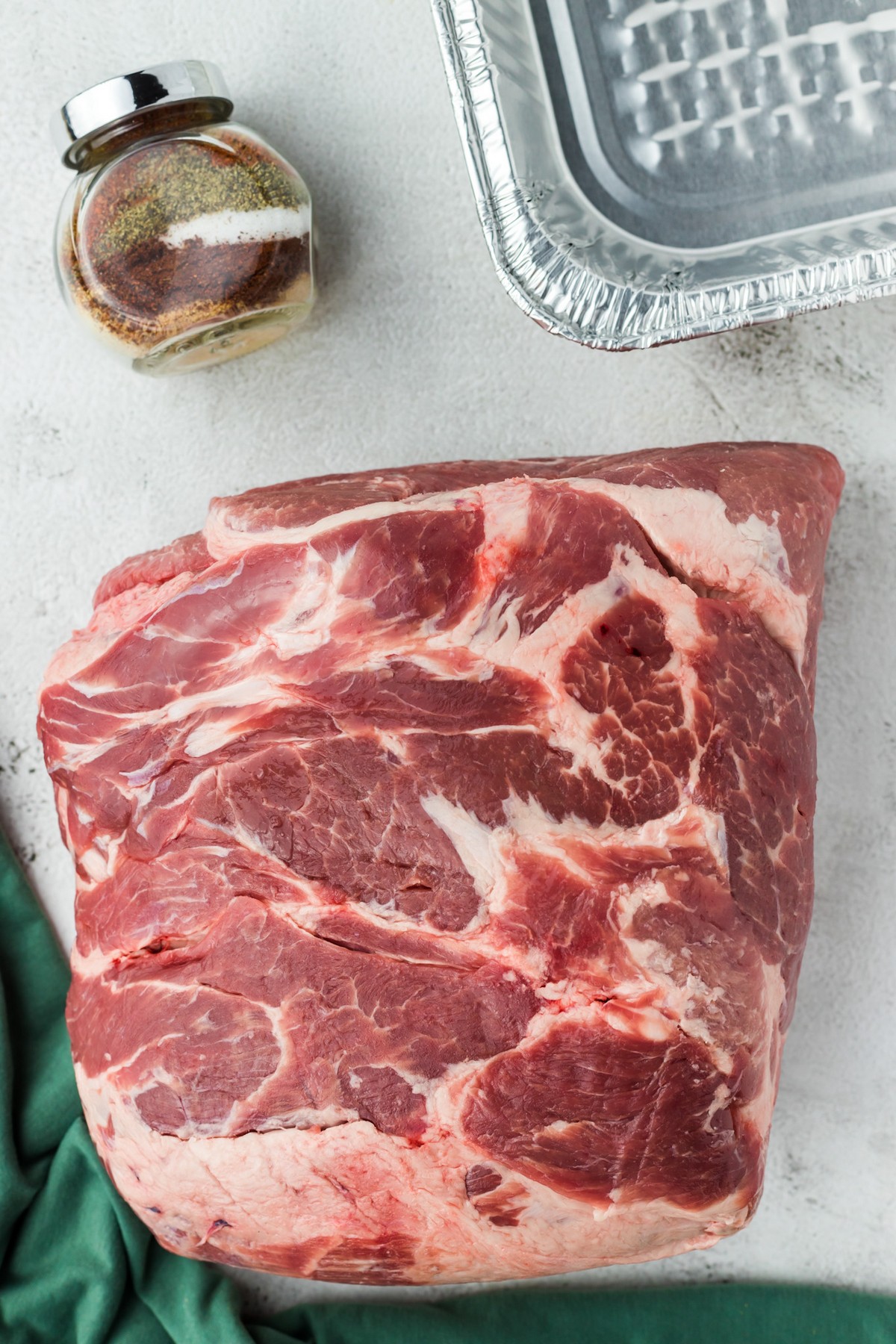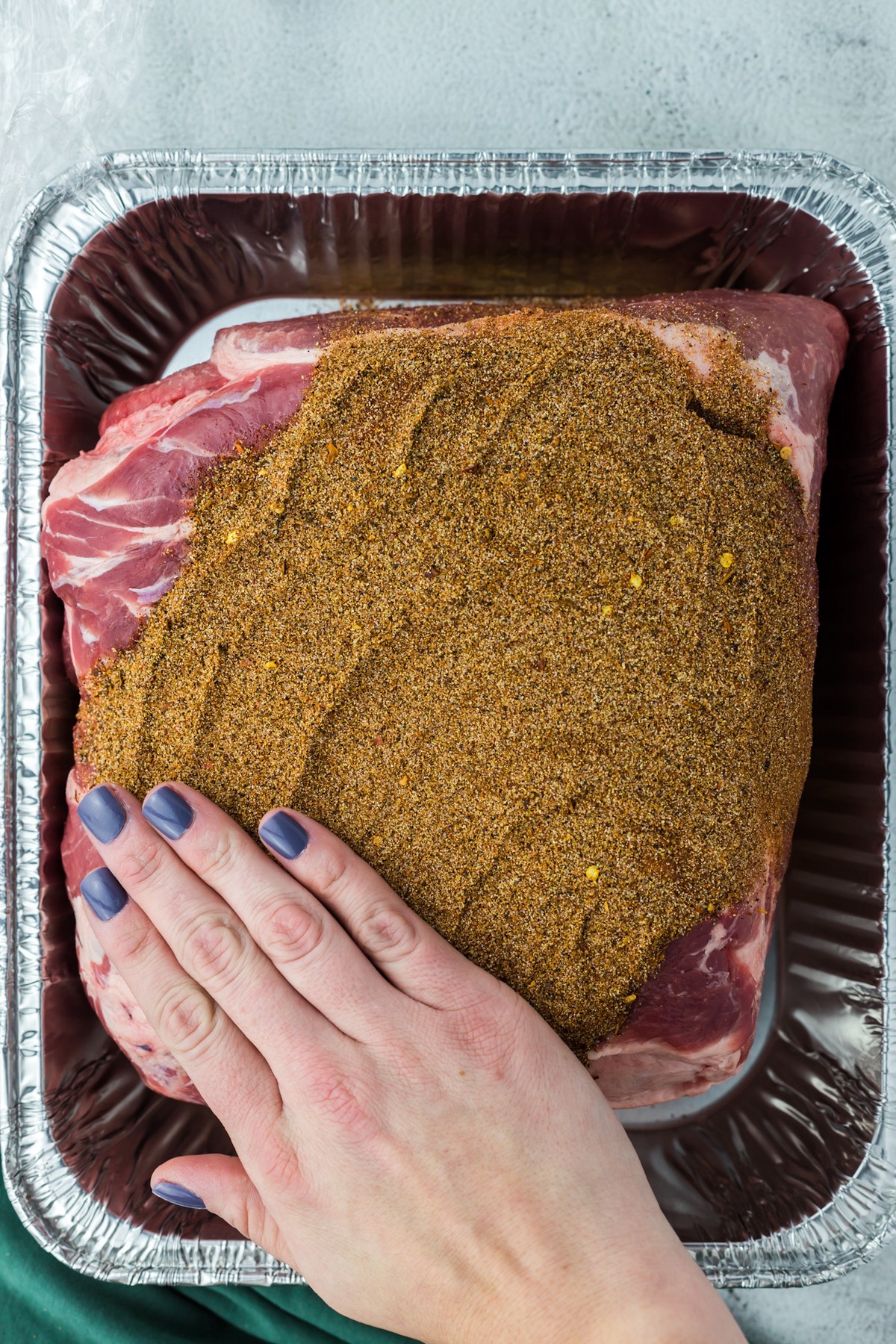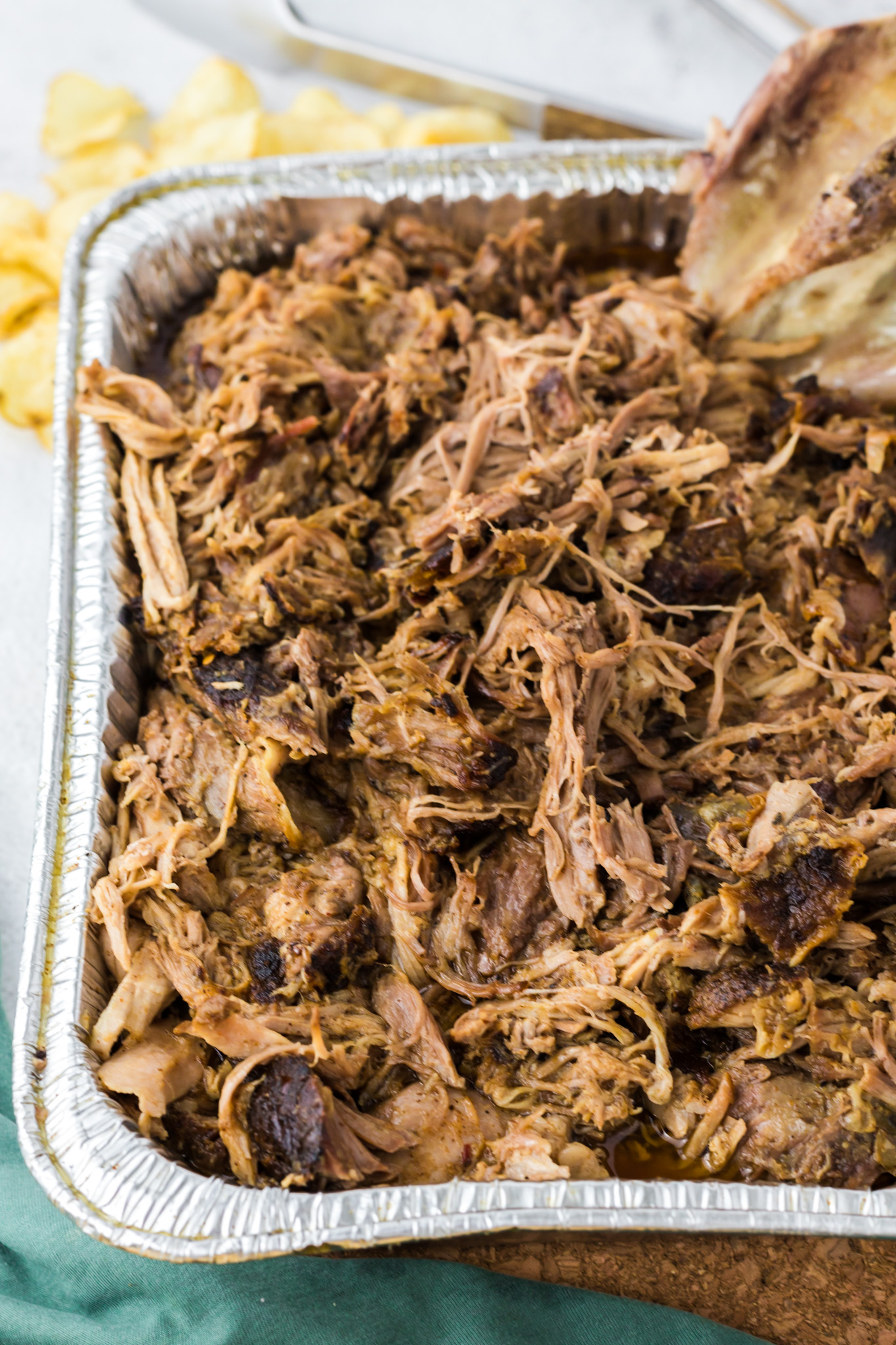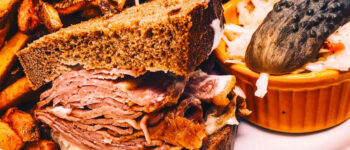What is the best internal temperature for pulled pork? For flavorful meat, it’s essential to ensure the meat has reached the correct internal temperature. Otherwise, you could be left with tough meat that won’t shred. Whether you are smoking, roasting, or grilling, this guide will help you master the perfect internal temperature for pulled pork at your next BBQ.
Pulled pork is a great way to feed a crowd because the cooking process is almost hands-off. Plus, pork is cheap and easy to work with.
All you need to do is figure out how much pork you need per person, a good dry rub recipe, and an in-oven meat thermometer.
For the best pulled pork, you want to cook the meat low and slow. Cooking at higher temperatures will give you a tough result that’s difficult to shred. Slow cooking at low temperatures gives you a tender, succulent cut of meat that is perfect for shredding!
Looking for a great recipe? This is the best pulled pork recipe to make in the oven. It’s perfect for beginners!
What cut of meat is best for pulled pork?
There are many different cuts of pork and it can get confusing fast.
A pork shoulder or pork butt are the best cuts of meat for shredding. Often, the terms pork shoulder and pork butt are used interchangeably at grocery stores. While they are from the same areas of the pig, there are slight differences:
- Pork Butt: Also known as Boston Butt, this cut is from the upper shoulder. Pork butt is a fattier cut of meat which makes it perfect for shredding.
- Pork Shoulder: Also known as Picnic Shoulder, this cut is slightly leaner and comes from only a part of the shoulder - from the front leg portion of the hog.
- Other cuts, like pork roast or pork loin, are not recommended for shredding.

The pork shoulder and butt cuts are packaged as large cuts of meat with a generous amount of fat. Whether you are smoking or roasting the meat to shred, both options are fantastic choices for pulled pork.
How to Make Pulled Pork
Pork butt is a fatty cut that contains a lot of connective tissue. That’s why it’s a great choice for cooking slowly for long periods of time in the oven or smoker.
If you do a quick Google search, you will see that there are millions of different ways to make pulled pork.
See more : How to Tell If Cheese Has Gone Bad
The number one tip is to make sure you give the pork plenty of time to cook. If the meat is cooked too quickly, the fat, connective tissues, and muscle fibers won’t have a chance to break down, so the meat will be full of gristle and tough.
For the best results, set your grill or oven to 225F - 250F degrees. Depending on the size of the cut, the cooking time will take hours - probably most of the day. For slow cooking, estimate about an hour per pound of meat.
I recommend seasoning the pork the night before. Choose any BBQ spice rub of your choice. I prefer a spice mixture with chili powder so you get the smoke flavor without having to use a smoker.


Apply the seasoning generously on all sides of the meat. Then, wrap in plastic wrap (Press N’ Seal is my personal favorite) and refrigerate overnight.
If you notice the meat is overly fatty, you can trim away some of the fat cap, but resist the urge to trim away too much. As the meat cooks, any large pieces of fat will render and “self-baste” the meat, adding flavor and moisture. Don’t forget to smoke or roast the meat with the fatty side facing up.
While the smoker or oven is preheating, allow the meat to rest on the counter to come to room temperature. Even though it will be cooked at a low temperature, adding cold meat to a hot oven or smoker will extend the cook time.
What temperature should pulled pork be cooked to?
While pork is safe to eat at 145F, you will want to cook pork shoulder much longer than that to allow the piece of meat to reach its sweet spot.
The best internal temperature for pulled pork is 205F degrees. At this temperature, the meat is juicy, succulent, and will shred with minimal effort.
While it’s safe to consume at a much lower temperature, the connective tissues will still be intact. If you stop the cooking process too soon, the meat will not shred and will be tough and lack flavor.
The best way to monitor the internal temperature of the meat is to invest in an in-oven digital meat thermometer. The thermometers are inserted into the meat so you can monitor the cooking process without ever opening the oven door!
See more : Dishwashing temperature guidelines
The meat will continue cooking after you remove it from the heat, so it’s safe to let it begin resting at around 195F degrees. Alternatively, it’s safe to continue cooking until 205F. But don’t let it cook too far past this point as the meat will begin to dry out.
Either way, allow the meat to rest for at least 30 minutes before shredding. This allows the juices to redistribute so the pulled pork will be super tender and moist. Plus, it’s much easier to shred after it has cooled.
At what temperature will a pork butt stall?
During cooking, the internal temperature of the pork will rise quickly, then stall at around 140F-160F degrees. It’s called “the stall” because the meat seems to stop cooking during this time and “stalls” for a few hours.
Understandably so, this process makes many home cooks nervous and impatient. It’s important to resist the urge to increase the cooking temperature during this time in an attempt to skip the stall altogether.
As nerve-wracking as it can be, know the temperature will begin to climb again after a few hours. The best advice is to plan ahead for this time.
How to Shred Pulled Pork
After the pork has reached 200F-205 degrees, it’s time to shred. There are a few different ways to shred slow-cooked meat…

Using shredding claws is the recommended method. Similar to forks, these “claws” are excellent tools for quickly shredding large cuts of meat with minimal effort.
Using your hands is the easiest way to make sure you pull out any gristle pieces of meat. However, the meat should be cool enough to handle before you use this method.
Alternatively, forks are a good solution to shredding meat. Face two forks together at the center of the meat. Then, pull away at the same time to shred. Continue doing this until you reach the desired consistency.
After shredding, use the meat for BBQ sandwiches or serve it as the main entrée with several side dishes. Drizzle homemade BBQ sauce and serve!
Related Posts
- How Much Pulled Pork Per Person?
- Can You Freeze Pulled Pork?
- Oven Roasted Pork Shoulder
- BBQ Dry Rub Recipe
- Nachos (for leftovers)
- Vegetable Soup (with leftover pulled pork)
Side Dishes for Pulled Pork
- Air Fryer Tater Tots
- How To Boil Broccoli
- Air Fryer Frozen Sweet Potato Fries
- Oven Roasted Baby Carrots
- Southern Pear Salad
Nigel Gildon editor:Nigel Gildon is the editor of Chef Wayne’s Big Mamou: Chef Wayne’s Big Mamou. He has worked in the publishing industry for many years and has a passion for helping new authors get their work into the hands of readers. 63 Liberty Street * Springfield, MA 01003




